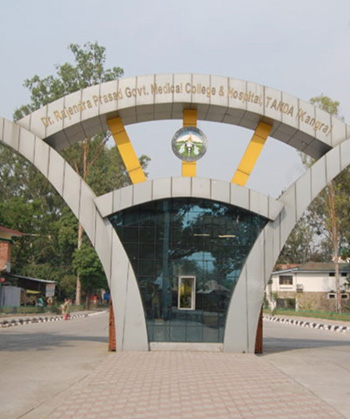SHIMLA- The state government has given its approval to establish two robotic cathlabs at Dr. Rajendra Prasad Government Medical College in Tanda, Kangra. It will provide advancing healthcare in the state through the introduction of Robotic Surgery.
According to the government spokesperson, Tanda college administration has been asked to submit a comprehensive proposal outlining the implementation of the facilities.
But a bigger challenge that government needs to address in medical colleges in Himachal is the lack of dedicated faculties.
The government has been deputing faculties from IGMC Shimla and Tanda medical colleges, both older colleges, to the newly opened colleges whenever Medical Council of India undertakes inspection of these new colleges.
These new colleges lack trained faculties to provide specialised health care to the patients.
This move, no doubt reflects the government's commitment to developing an efficient healthcare system, but it needs to adress a larger perspective to make the right move.
Chief Minister Thakur Sukhvinder Singh Sukhu expressed the government's determination to expand Robotic Surgery Facilities to other medical institutions as well, including Indira Gandhi Medical College in Shimla and the Chamiana Super-Specialty Hospital. Detailed project reports (DPRs) have already been received from these establishments and are currently being reviewed by experts. A provisional budget allocation of Rs. 30 crore has been made, with additional funding to be provided as required.
Chief Minister Sukhu emphasized the potential of robotic cathlabs to revolutionize certain medical procedures.
With the integration of robotics technology, these facilities can offer improved precision, enhanced visualization, and greater control during interventions. These advantages are expected to lead to better patient outcomes, reduced complications, and shorter recovery times.
Cathlabs are specialized medical units that utilize imaging technology to perform minimally invasive procedures, primarily in the field of cardiology.
The incorporation of robotic technology into cathlabs holds the promise of significantly enhancing the precision and efficiency of these procedures, benefiting both patients and medical professionals.
The government's investment in advanced medical technology aims to enhance healthcare facilities in the state.
This initiative serves two important purposes. Firstly, it ensures that the people of the state have access to the latest advancements in government health institutions.
Secondly, it aligns with the government's objective of promoting health tourism to attract individuals seeking medical treatments.
This strategic approach is expected to generate revenue for the state while simultaneously creating employment opportunities for the youth.
But the moot question is: Faculty and Experts need to establish their credentials to attract "Medical Tourists" in supper speciality that government is talking about?




